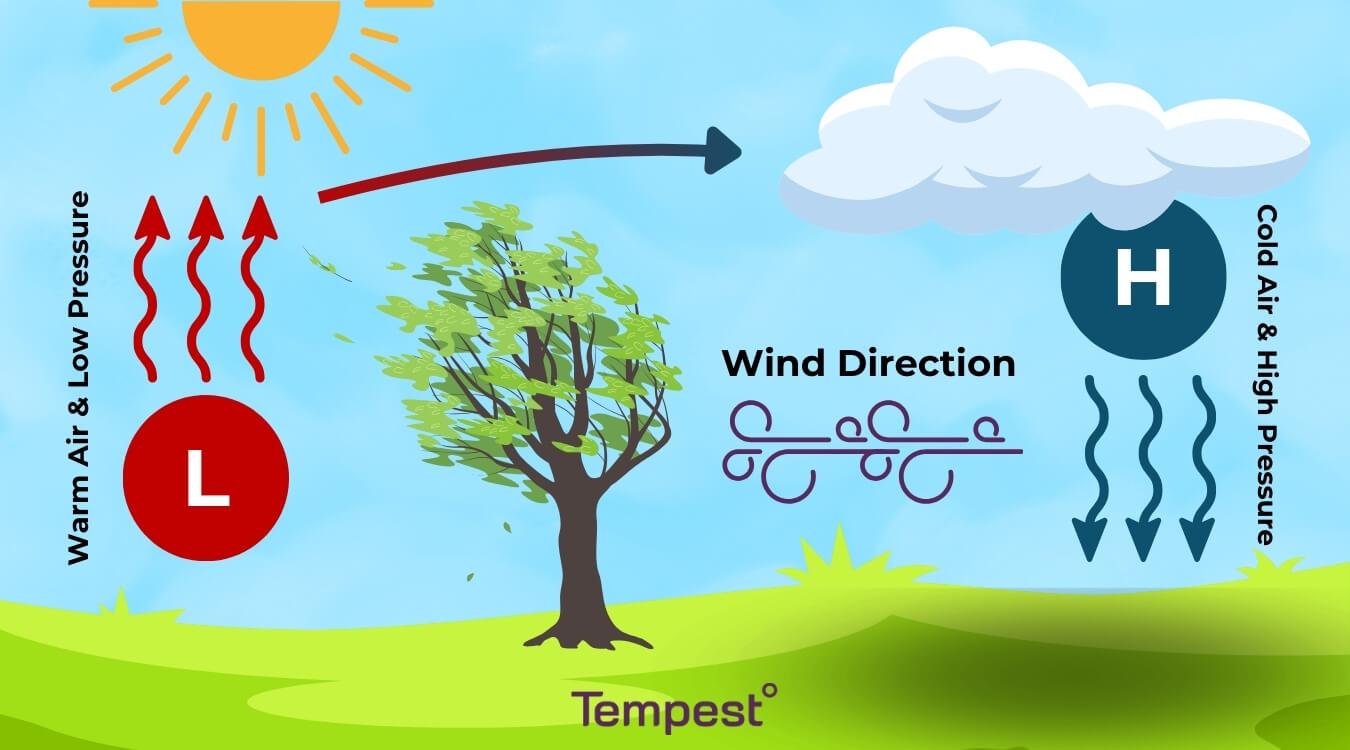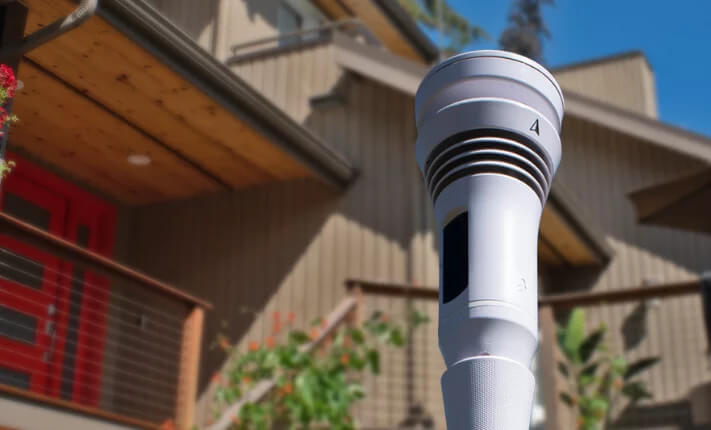
Whether a welcome breeze on a hot day or full-force gusts during a storm, what causes wind is a mystery to many. However, the science behind wind is very well-known.
You can be enjoying a slightly breezy and calm morning, and seemingly out of nowhere, the wind picks up and makes outdoor conditions unpleasant. So, where does wind come from, and how is wind formed? We answer each of these questions and more below.
Explore the Tempest Home Weather System, which offers continuous wind velocity readings.
How Is Wind Created?
As explained by the U.S. Energy Information Administration (EIA), winds are caused by the uneven absorption of heat by the Earth’s surface. Warm air rises and expands, creating less pressure than in areas where there is cooler air. Since air will always move from a high-pressure to low-pressure environment, this movement of air is what creates wind.
Why Is There Wind? Understanding The Wind Cycle
The Earth heats up during the day and cools at night, creating a natural wind cycle as temperature and pressure shift from day to day. However, other forces besides changes in temperature can influence wind patterns.
For instance, the Earth’s rotation also plays a big role in the wind cycle, as does the Coriolis effect. Since the planet is a globe that’s constantly rotating on its axis, air doesn’t circulate in a predictable, straight pattern between the poles and the equator, explains the National Oceanic and Atmospheric Administration (NOAA). Instead, the Earth experiences curved wind paths that create complexity and variation in global weather patterns, wind direction (which can be measured by a wind vane), and speed.
Measure Wind Velocity Accurately In Your Area With The Tempest Weather System
Whether you’re an avid cyclist looking to avoid a windy day or a watersport enthusiast reading the surf report, you may have wondered at some point – how does wind work? Even if you have a love-hate relationship with the wind, knowing what causes it can give you a better understanding of how these patterns can shift throughout the day.
To monitor changes in wind velocity wherever you’re located, you can use the Tempest WEATHERmeter. This is a pocket-sized anemometer that provides accurate wind speed readings in your precise location.
Shop the Tempest WEATHERmeter for on-the-go wind measurements, or use the Tempest Weather System to access comprehensive forecast data for your home’s location rather than getting multiple weather instruments.

